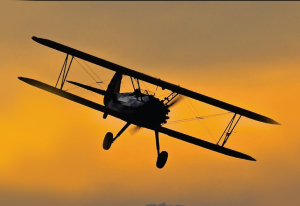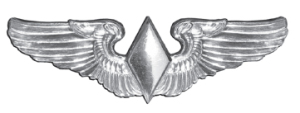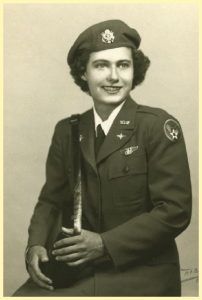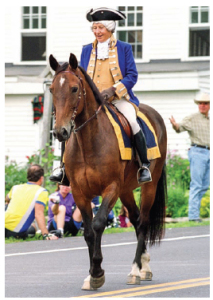 The annual Memorial Day service at the Dorset church is a solemn event with readings of the names of those who have gone off to war and not returned, the Gettysburg Address, and the poem, In Flanders Fields. It is, after all, a day that is given to remembering the dead. However, there is a moment for the living. It comes when anyone who has served is asked to stand and tell the audience in what branch and when. People stand and say things like, “Marine Corps, 1965 to 1968,” or “Army, 51 to 53,” or “Navy 1943 to 1945.”
The annual Memorial Day service at the Dorset church is a solemn event with readings of the names of those who have gone off to war and not returned, the Gettysburg Address, and the poem, In Flanders Fields. It is, after all, a day that is given to remembering the dead. However, there is a moment for the living. It comes when anyone who has served is asked to stand and tell the audience in what branch and when. People stand and say things like, “Marine Corps, 1965 to 1968,” or “Army, 51 to 53,” or “Navy 1943 to 1945.”
Most of the people who stand and speak their cryptic lines are men. Unsurprisingly. But every year, there are a few women and one of them stands and speaks her name, her unit, and the dates of her service. “Pat Nuckols. WASP. 1942 to 1944.”
The first year after I’d heard her stand and speak, I heard someone whisper, “What’s a WASP?”
No reason that person should have known. After all, the unit’s records were kept sealed and secret for thirty years. By the time the story came out, not many people cared.
After that Memorial Day services, I asked someone, “Do you know Pat Nuckols?”
“Oh sure. She’s a friend.”
And, my friend went on, a part of that class of retirees you find in this area. We all know them. They are determined to prove not merely that they aren’t old, but that they have more vigor and live more robustly than a lot of people who think of themselves as young.
I didn’t know, then, Pat’s age. But she was a pilot during World War Two so it wasn’t hard to do the math. Yet, according to my friend, she was still an active skier.
“In fact, she goes up to Canada every year. The Bugaboos, I believe, and does that helicopter skiing.”
Really, said I. At her age?
“Oh, nothing holds Pat back. She was playing ice hockey until a couple of years ago. Defense, you know, where you don’t have to be quite so fast. But she is still very nimble.
“And she has always been a rider and enjoyed it. She still keeps a horse stabled in Pawlet and rides all the time. She’s one of the most active people I know.”
And that struck me as interesting. But there are a lot of very active older people in these parts. On some days you would swear the ski mountains were giving discounts to anyone with an AARP membership. And all of them are on the black diamond trails. But what I was really interested was that wartime service in WASP.
I thought it would make a good story and stories are my business. Norman is the name.
Seriously, dear reader, how much do you know about the WASP. And wouldn’t you like to know more? To hear the story from one of the few survivors of that unique outfit?
I persuaded the editor of this magazine to let me write a story about Pat Nuckols and her wartime service. And the next year, after the Memorial Day service, I approached her.
“Mrs. Nuckols,” I said. “May I speak to you for a minute?”
“Call me ‘Pat,’” she said. Firmly. “What do you want to talk about?”
So I explained and she listened. Intently.
I had assumed that she would be happy to talk with me about her service and her outfit. But I was wrong. I got a variation of a speech that seems almost standard among veterans of the Second World War.
“I didn’t do anything special,” she said. “Go talk to someone who did.”
Well, in a long career of magazine journalism, it was hardly the first time I’d gotten a brush-off. And it was one of the more polite versions. Delivered with a self deprecating laugh that conveyed the message, “No hard feelings, though.”
And it was a good answer. The right answer. An answer that gets to something essential about World War Two that most people who came along later don’t quite understand. I suppose I did because I’d heard her answer before.
I am fairly fluent in the history of World War Two. This is because my father was a dive bomber pilot, who flew off an attack carrier in the Pacific during that war and when I was a boy and tried to get him to tell me about his experiences, he would change the subject. The theme of these diversions was, “I didn’t do that much. I just did my job. That’s what we all did. There were people they will never make movies about who did dangerous things back here, for no credit and not much money. Go read something about them.”
He was serious, so I took him seriously. And I did read and I got what he was talking about. There was a lot of dangerous, dirty work to be done back then and, fortunately, a lot of people who willingly got it done. There were Seabees who were construction workers out on the Pacific islands where, among the usual risks, there was always the chance you might get shot by a Japanese sniper who had made up his mind to never give up. That, or stick your bulldozer blade into some “unexploded ordinance.” There were merchant seamen who nursed slow freighters and tankers across the Atlantic where they were fat targets for German U-boats. And there were Women Airforce Service Pilots.
I knew just enough about this elite, forgotten unit to engage Pat in a bit of conversation as long as I had her attention. I asked her if she’d started in a Stearman before she went to the AT-6 … or something like that.
She appreciated that, I think. But she wasn’t going to be conned.
“Give me a call and maybe we can have lunch some day. And, to answer your question, I flew Stearmans first … from the back seat.”
Some time went by before we had that first lunch and by then, it was winter. We met at Firefly, in Manchester, for hamburgers. She was just coming down from Stratton where she had spent the morning skiing the Sunbowl where, she said, “the conditions were excellent.”
I know enough not to ask a lady her age but I’d wager that she was the oldest person skiing at Stratton that morning. She had, after all, only recently given up the hockey. She still plays golf and runs to her ball for the next shot. it wasn’t that long ago that she did a bit of skydiving. Perhaps because she never had to use her parachute during the time she was flying combat aircraft and just wanted to see what it would have felt like.
“Fun,” she said. “But not something I ever need to do again.”
She’d had to give up the heliskiing, though, she told me when we were making small talk. Result of breaking her neck when she took a fall. Doctors had told her to knock it off.
Because she is naturally gregarious and generous, Pat wound up answering my questions about her time as a WASP. But she was, like my father, less interested in herself than in the big picture.
“Don’t write about me,” she insisted. “Write about the unit. What we all did. That’s what people need to know about.”
People who write (me included) will betray that kind of requested confidence. It is almost part of our DNA. But this time … I think not. Some requests deserve to be respected, even by journalists.
So, to answer the story of what Pat did in the war, let us begin by talking about airplanes. Military men had, before the first of the World Wars, dismissed airplanes as unimportant. In the days leading up to the second of those wars, it became clear that they were not just important but even supreme on the battlefield.
But the peace-loving nations were slow to learn and had to play catch-up. In both the building of planes and the training of aviators. And, to simplify, an airplane could be built more quickly than an aviator could be trained. There were more planes than trained pilots to fly them.
And as trained men became available, they were put where they were most needed and that meant where the action was.
Leaving a lot of necessary flying to be done and not enough pilots to do it.
There was no reason, of course, that women couldn’t do it. (Couldn’t, for that matter, have flown in combat, but that was unthinkable in those times.) But women were certainly flying before the war, some of them famously and spectacularly, like Amelia Earhardt. Some in obscurity, like Pat who was the kind of young woman who thought she would like to fly and had gone out and learned how to do it and when the war came was a licensed pilot.
The British had been at war before America came in after Pearl Harbor and had solved their need for trained pilots to do non-combat work by using women. The Americans, when it was their time, copied their program. The call went out for women to learn to fly and, once trained, to do the necessary utility flying. Moving planes, for instance, from “factory to field,” flying personnel from here to there, towing targets for male pilots who were learning to be combat aviators. They would shoot at target sleeves towed, frequently by WASP, in order to perfect their gunnery skills before shipping off to war and dogfights against Japanese and German pilots. “One of the other girls told me once,” Pat recalled, “that it made her a little nervous when she realized she was towing a target that was being shot at by someone who had fewer hours than she did.”
 Some 25,000 women submitted applications to fly with WASP. Not all of them, by any means, were licensed pilots. The applicants went through a tough evaluation. As tough as their male counterparts. Mental, physical, aptitude for flying. All the usual. And, like the thousands of men who wanted to fly, there were a lot of them who were rejected for one reason or another.
Some 25,000 women submitted applications to fly with WASP. Not all of them, by any means, were licensed pilots. The applicants went through a tough evaluation. As tough as their male counterparts. Mental, physical, aptitude for flying. All the usual. And, like the thousands of men who wanted to fly, there were a lot of them who were rejected for one reason or another.
I saw a P-47 coming up from another airstrip and heading right for us. I hit the throttle and banked the plane and got us out of there. Totally against regulations for the student to do that. But if I hadn’t … well, we might have had a mid-air collision and what all military pilots say is that one of those will ruin your whole day.—Pat Nuchols
Pat almost didn’t make it. Not because she couldn’t handle the stick and throttle part of the work. Because she wasn’t—and isn’t—what you would describe as “tall.” Since she is a woman— and a “lady” in my vernacular—it is fair and accurate to describe her as “petite.”
“You had to be five feet two and a half inches tall,” she remembers, “to be accepted in the program.”
She was—is—borderline. On the south side of that.
But she made it as far as primary training by standing up exceedingly straight and generally brazening it out. But there were skeptics everywhere, ready to wash her out. Including her instructor in the primary phase of flight training.
“Lieutenant Pinkston,” she says. “I still remember his name. He was about six-three and when we went up in the Steerman, with him in the front seat, I couldn’t see over him and could barely see around him. Even though I had three pillows with me, in the cockpit, so I could sit up higher.
“We were near the end of the flight and, by the way, the end of that phase of training, and coming around for a landing. He had set the throttle and I wasn’t supposed to touch it. He was looking down at his lap and doing some paperwork—grading my performance on the flight, I suppose—when I saw a P-47 coming up from another airstrip and heading right for us. I hit the throttle and banked the plane and got us out of there. Totally against regulations for the student to do that. But if I hadn’t … well, we might have had a mid-air collision and what all military pilots say is that one of those will ruin your whole day.
“When we were back on the ground, Lt. Pinkston told me I was all checked out and ready to move on to the next phase. Then, when I was walking away, carrying my pillows under one arm, he shouted after me. “Kenworthy (her maiden name) tell me how tall you are.” “Five feet, two and a half inches, SIR,” I said. A small lie. Only by a couple of inches or so.
And, so, it was on to the next phase of training.
Of the 25,000 who had applied for the work, Pat was one of some 1800 who were accepted and just over 1000 who graduated from flight training and received their wings. Of these, 38 were killed in crashes of one kind or another. It was not desk work.
They were paid less than the male pilots who shot at the targets they towed. The bodies of those 38 who died in crashes were not sent home at government expense. That was up to their families. The government may have been grateful for their service but not grateful enough even to provide American flags to be draped over their coffins.
So, they were not quite military but not quite civilian. They did important, dangerous work and for a long time, it went unrecognized. That service was even, for obscure bureaucratic reasons, kept secret after the unit was disbanded at the end of 1944. The war would last only a few more months and by then, the U.S. was making more planes and training more pilots then were needed to finish the job.
Thirty years later, in 1975, reports that the Air Force planned to “train its first women pilots,” led to a protest from some of those who truly were first and had been woefully unappreciated and unrewarded for it.
Washington played catch up. Those who had served with WASP were officially declared “veterans.” The wonder is that any had ever thought they were not. And eventually, the Air Force, itself, recognized the unit as part of its history. How many generals and colonels and hot shot fighter pilots had learned gunnery by firing at target sleeves towed by someone from WASP?
Their final recognition came when President Barack Obama signed a law awarding the unit a Congressional Gold Medal. This came in 2009. By this time, woman were flying combat missions over Iraq and Afghanistan, going into space, and serving with the Blue Angels and the Thunderbirds.
Pat went to the ceremony. Someone got a photograph of her, kneeling next to another member of her old unit who was in a wheelchair. The woman was identified as Elizabeth Pfister of Aspen, Colorado. Pat had known her as Betty Haas. She had gone on to fly in air races and become one of the first women to fly helicopters and then put the skill to use when she formed a air rescue operation in Colorado. She was one of the 200 or so survivors of WASP who attended the ceremony, one of whom described them as a “bunch of tough old birds.”
Yes, indeed. Among them, Pat Nuckols who does not like to make a fuss over the thing and tends to deflect the questions of nosy journalists looking for a story. But she still goes to the Dorset Church on Memorial Day every year and stands up with the other veterans and tells the congregation of her service.
“Pat Nuckols. WASP. 1942 to 1944.”
For which …
We thank you. ◊
Geoffrey Norman is an author who lives in Dorset.



